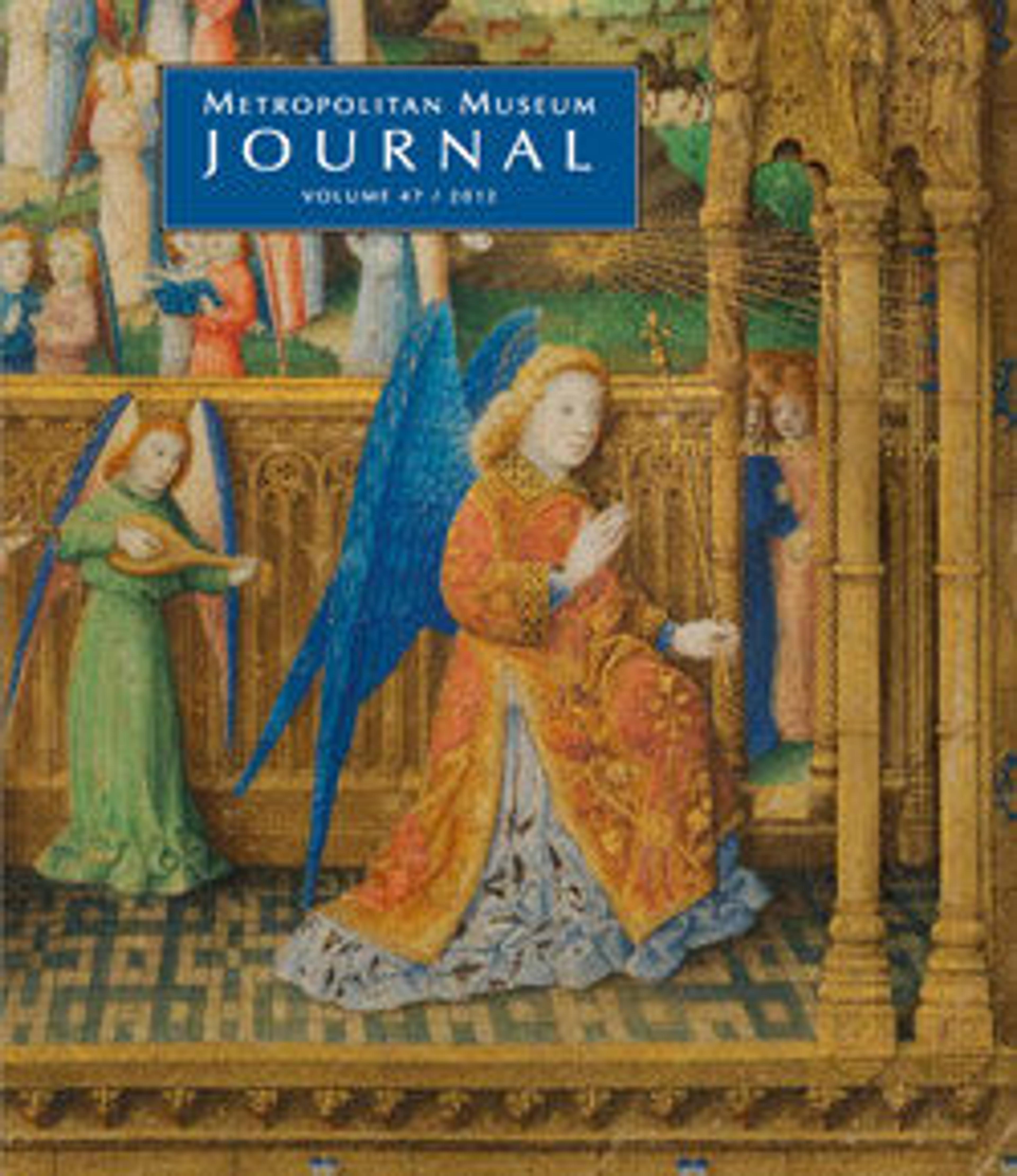Situla with floral decoration
Wine was a coveted drink starting in Egypt’s earliest days, though wine services do not have a long history there, as strainers were not found before the New Kingdom. The importance of wine grew during that period, as intoxicating drinks played a prominent role in festivals and in communal celebrations. When associated with Bastet and other feline goddesses, these drinks helped partakers emulate the drunkenness that brought about the goddesses’ pacification.
Such practices probably occurred in festivals for Bastet in Tell Basta, where these vessels were found. The vessels were buried in two caches close to the temple, along with silver and gold jewelry, ingots, and lesser objects. Rare in antiquity, most silver and gold vessels were later melted down and reused for new projects. The Tell Basta hoards are thus exceptional finds.
Situlae formed part of wine-drinking sets, apparently used for sipping wine. This electrum example is decorated with olive leaves around the neck, and a lotus calyx embracing the base.
Such practices probably occurred in festivals for Bastet in Tell Basta, where these vessels were found. The vessels were buried in two caches close to the temple, along with silver and gold jewelry, ingots, and lesser objects. Rare in antiquity, most silver and gold vessels were later melted down and reused for new projects. The Tell Basta hoards are thus exceptional finds.
Situlae formed part of wine-drinking sets, apparently used for sipping wine. This electrum example is decorated with olive leaves around the neck, and a lotus calyx embracing the base.
Artwork Details
- Title: Situla with floral decoration
- Period: New Kingdom, Ramesside
- Dynasty: Dynasty 19
- Reign: Ramesses II or slightly later
- Date: ca. 1279–1213 B.C.
- Geography: From Egypt, Eastern Delta, Tell Basta (Bubastis), Temple of Bastet, ancient cache
- Medium: Electrum
- Dimensions: H. 13.8 cm (5 7/16 in.) ;Diam. 4.8 cm (1 7/8 in.)
- Credit Line: Rogers Fund, 1907
- Object Number: 07.228.22
- Curatorial Department: Egyptian Art
More Artwork
Research Resources
The Met provides unparalleled resources for research and welcomes an international community of students and scholars. The Met's Open Access API is where creators and researchers can connect to the The Met collection. Open Access data and public domain images are available for unrestricted commercial and noncommercial use without permission or fee.
To request images under copyright and other restrictions, please use this Image Request form.
Feedback
We continue to research and examine historical and cultural context for objects in The Met collection. If you have comments or questions about this object record, please complete and submit this form. The Museum looks forward to receiving your comments.
